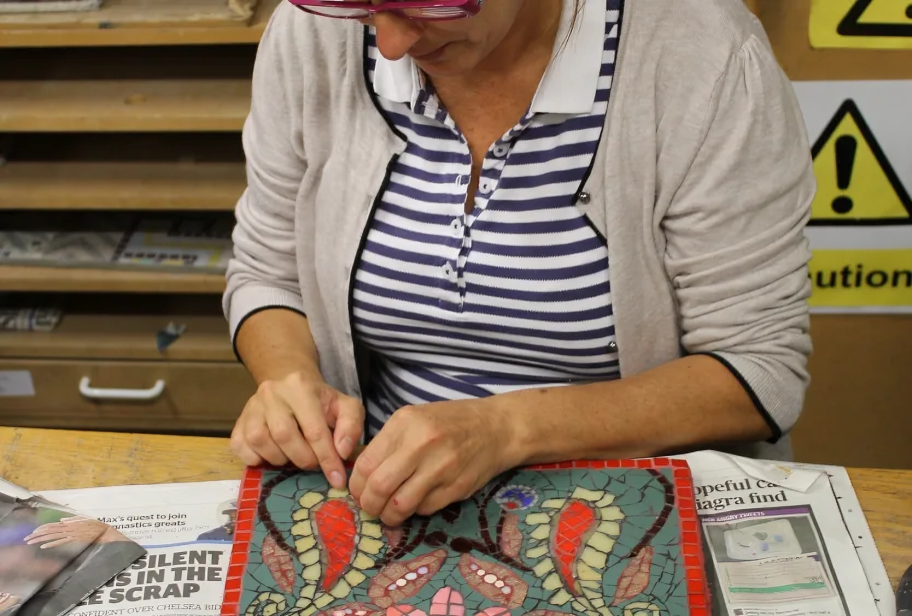Table of Contents
ToggleIntroduction
Mosaic skill in creative writing refers to piecing together various elements to create a cohesive narrative. This approach draws inspiration from the art of mosaic, where individual pieces form a larger, beautiful whole. Writers, much like mosaic artists, select different story fragments, characters, themes, and stylistic techniques, carefully blending them. Therefore, this skill is essential for creating complex, multilayered works that engage readers on various levels. In this article, we will explore how writers can hone their mosaic skill to enhance their storytelling.
Understanding Mosaic Skill in Writing
Mosaic writing involves assembling distinct parts into one coherent narrative that flows seamlessly. Writers might combine multiple perspectives, time frames, or even genres. Through this approach, they can create richer, more dynamic stories. For instance, novels that alternate between different characters’ viewpoints often rely heavily on mosaic skill. Readers appreciate the depth such structure provides because they see the story from multiple angles. Writers skilled in mosaic techniques bring fresh, innovative storytelling styles that captivate readers’ attention.
Building Blocks of Mosaic Writing
To develop mosaic skill, writers must first focus on the building blocks that form their narratives. These include plot, characters, themes, and style. Each element serves as a fragment, much like a tile in a mosaic, contributing to the overall picture. The key is ensuring that these elements work harmoniously rather than feeling disjointed. When crafting a story, writers should ask themselves how each fragment contributes to the whole. Through careful planning and deliberate choices, they ensure a seamless fusion of story elements, enhancing the reader’s experience.
Plot as the Framework
The plot serves as the framework in mosaic writing, much like the outline for a visual mosaic. Writers must decide how each plot fragment fits into the larger narrative. Whether jumping between different time periods or weaving in subplots, they must maintain coherence. Transitions between fragments should feel natural, ensuring readers remain engaged without becoming confused. Writers who excel in this technique craft plots that intertwine smoothly, creating suspense or surprise as necessary. In mosaic writing, the plot is both the skeleton and the glue that holds all other elements together.
Characters as the Core Fragments
Characters are vital in creative writing, and mosaic storytelling places even greater emphasis on their development. Writers using mosaic techniques often present characters through various lenses, revealing different aspects of their personalities and motivations. This multifaceted portrayal enables readers to connect with characters on a deeper level, understanding their complexities. Writers might choose to alternate between characters’ perspectives, or present flashbacks that reveal significant past experiences. When done effectively, this approach creates a rich, layered narrative where characters’ actions and backstories weave into the overarching story.
Thematic Layers in Mosaic Writing
Themes add another dimension to mosaic storytelling, functioning as the underlying message that ties the fragments together. Writers often explore multiple themes within a single narrative, skillfully intertwining them to create depth. For example, a novel might explore themes of love, betrayal, and redemption through different characters or storylines. By using mosaic techniques, writers can highlight how these themes interact, contrasting different perspectives or outcomes. The result is a narrative with a compelling emotional or intellectual impact, as readers are encouraged to think deeply about the themes presented.
Stylistic Choices in Mosaic Writing
Stylistic elements, such as tone, imagery, and narrative voice, play a significant role in mosaic writing. Writers must ensure that their stylistic choices align with the overall tone and mood of the story, even as they move between different fragments. For instance, a story might shift between poetic, lyrical prose and more straightforward dialogue, depending on the characters or scenes being portrayed. However, these shifts should not feel jarring. Writers skilled in mosaic storytelling carefully balance their stylistic decisions to maintain a consistent overall feel while still allowing for diversity in expression.
Techniques for Seamless Transitions
One of the biggest challenges in mosaic writing is ensuring smooth transitions between fragments. If done poorly, the narrative can feel disjointed, confusing readers and detracting from the overall experience. Writers must focus on creating natural transitions that guide readers from one fragment to the next. This can be achieved through the use of thematic or stylistic continuity, subtle foreshadowing, or recurring symbols or motifs. Writers should also consider the pacing of their transitions, ensuring that they don’t shift too abruptly. Well-executed transitions make the mosaic of a story feel cohesive and immersive.
Practicing Mosaic Writing Techniques
Writers looking to improve their mosaic skill should engage in regular practice and experimentation. One method is to write short stories that alternate between different perspectives or time frames. Writers can also try blending different genres or styles, creating a hybrid narrative that challenges conventional storytelling. Additionally, reading works that exemplify mosaic storytelling, such as multi-perspective novels or nonlinear narratives, can provide valuable insights. By studying how these techniques are employed by other writers, one can gain inspiration and learn how to apply similar methods to their own work.
Examples of Mosaic Storytelling in Literature
Several renowned authors have mastered the mosaic technique in their writing. Authors such as William Faulkner, Virginia Woolf, and Gabriel García Márquez often use multiple narrative perspectives and nonlinear timelines to build complex, layered stories. Faulkner’s “As I Lay Dying” and Woolf’s “Mrs. Dalloway” are prime examples of mosaic storytelling, where fragmented perspectives come together to form a unified whole. Reading such works can provide aspiring writers with a deeper understanding of how to weave separate narrative pieces together while maintaining cohesion.
Common Pitfalls in Mosaic Writing
While mosaic writing can produce richly textured stories, it also comes with potential pitfalls. One of the most common issues is overwhelming readers with too many fragments or failing to connect them coherently. Writers must avoid creating a narrative that feels like a collection of disjointed scenes. Another potential challenge is losing sight of the central story while focusing too heavily on individual fragments. To avoid these problems, writers should regularly step back and assess how each element contributes to the overall narrative. Maintaining balance and cohesion is crucial to successfully using the mosaic technique.
Conclusion
Mastering mosaic skill in creative writing allows writers to create rich, layered narratives that captivate readers. By blending various narrative fragments, themes, and stylistic choices, writers can construct stories with depth and complexity. Developing this skill requires practice, careful planning, and an understanding of how different elements contribute to the whole. Writers who excel at mosaic storytelling can offer fresh perspectives and challenge conventional narrative structures. Through experimentation and refinement, writers can transform their stories into intricate mosaics, each piece enhancing the beauty of the larger narrative.











